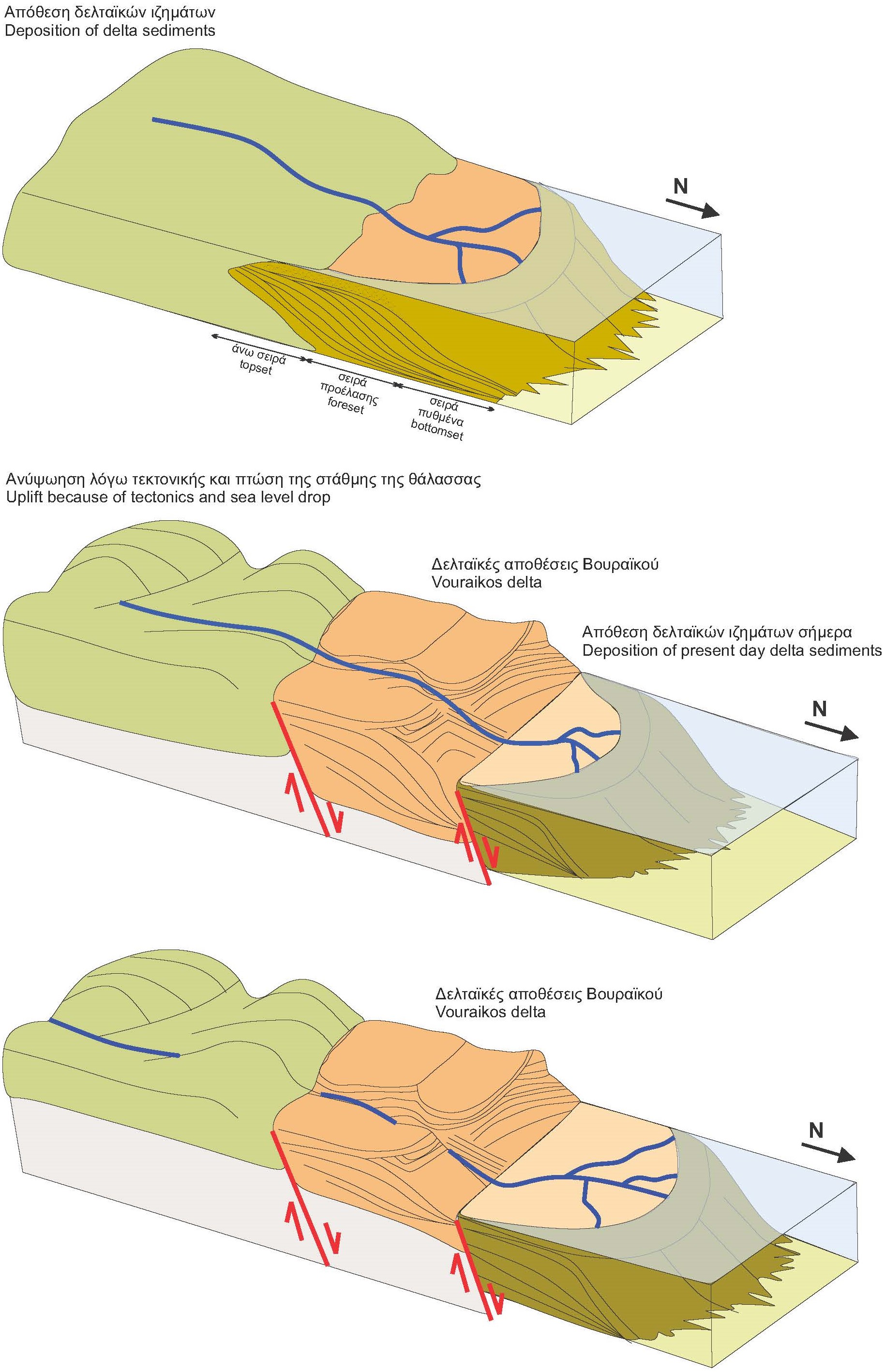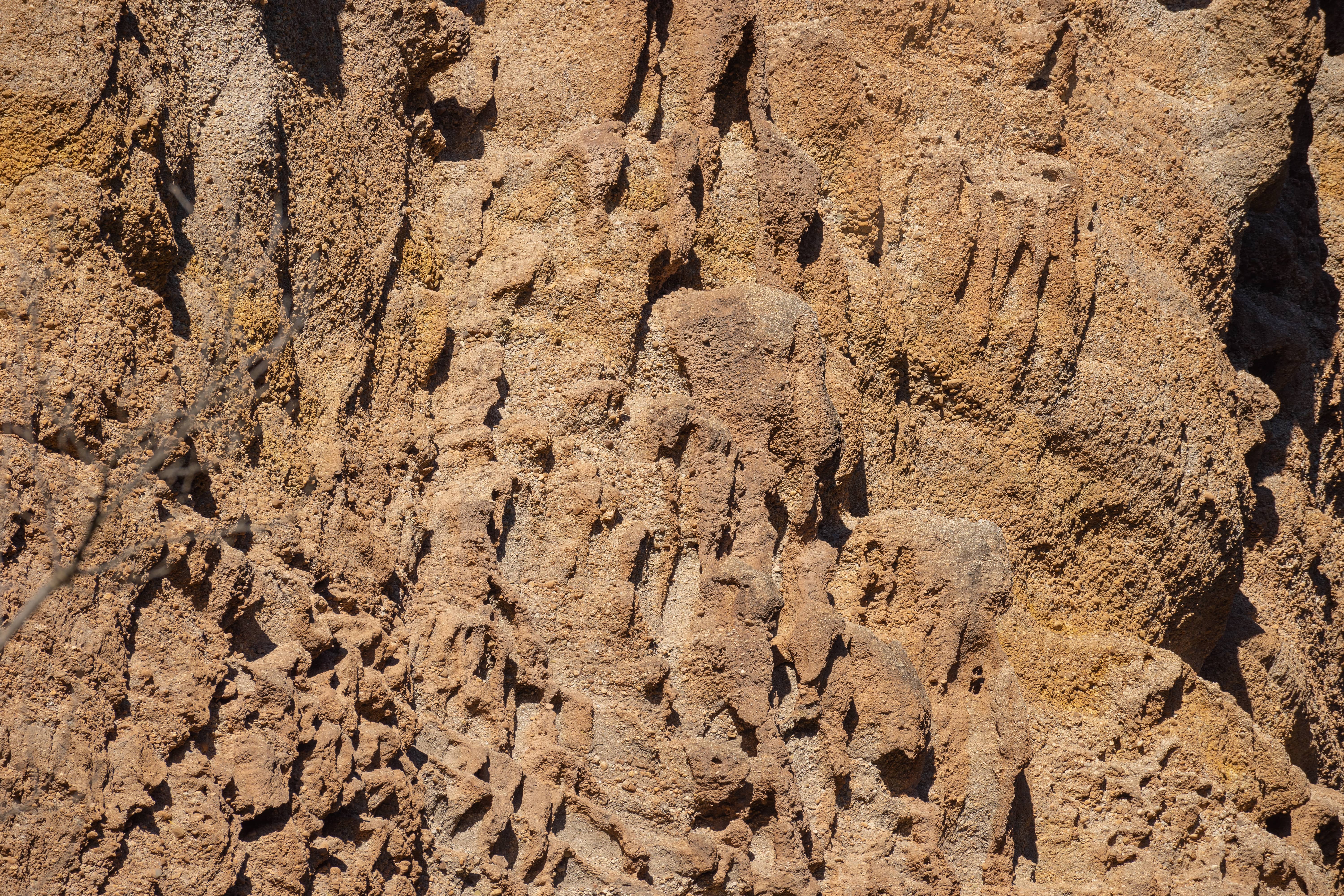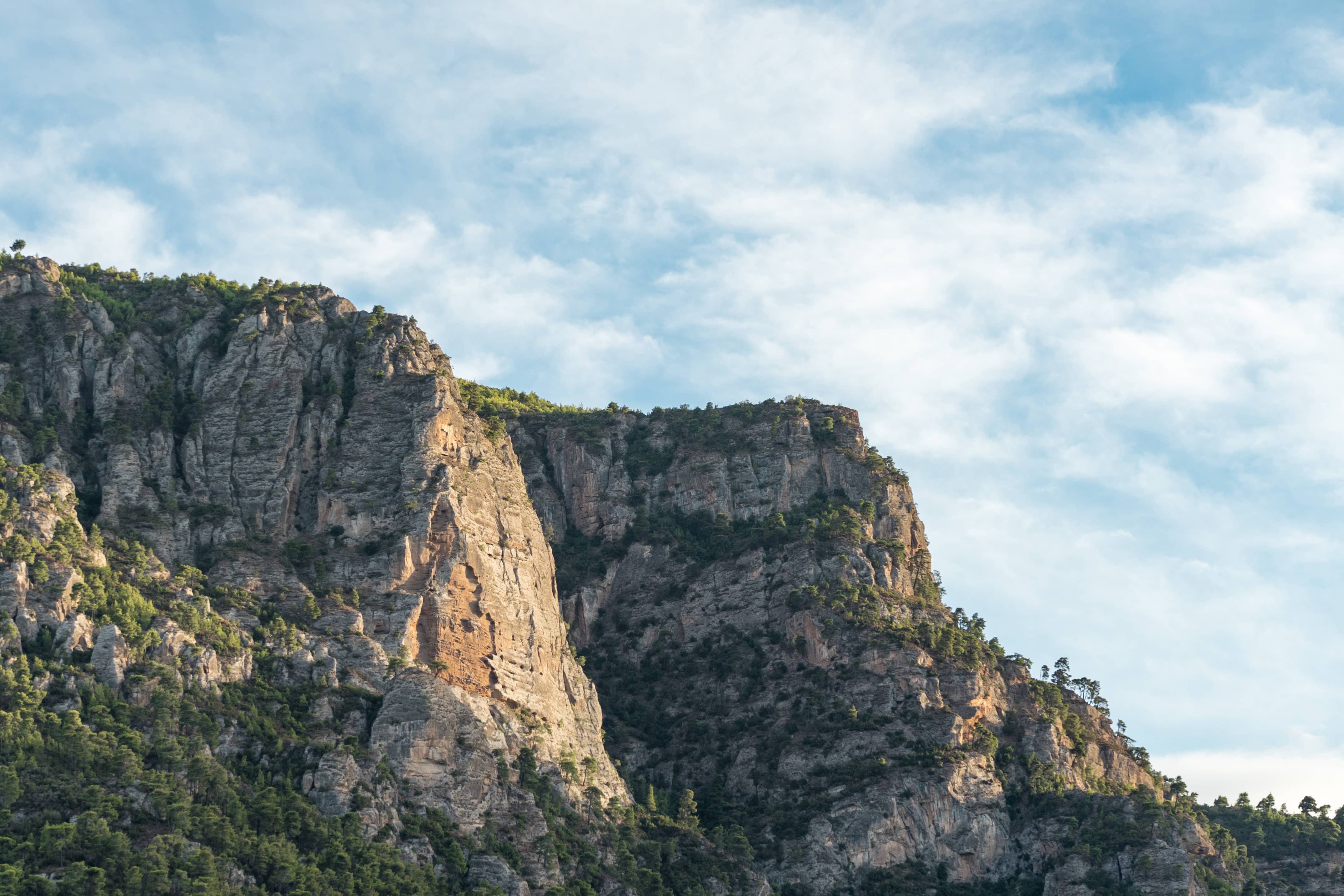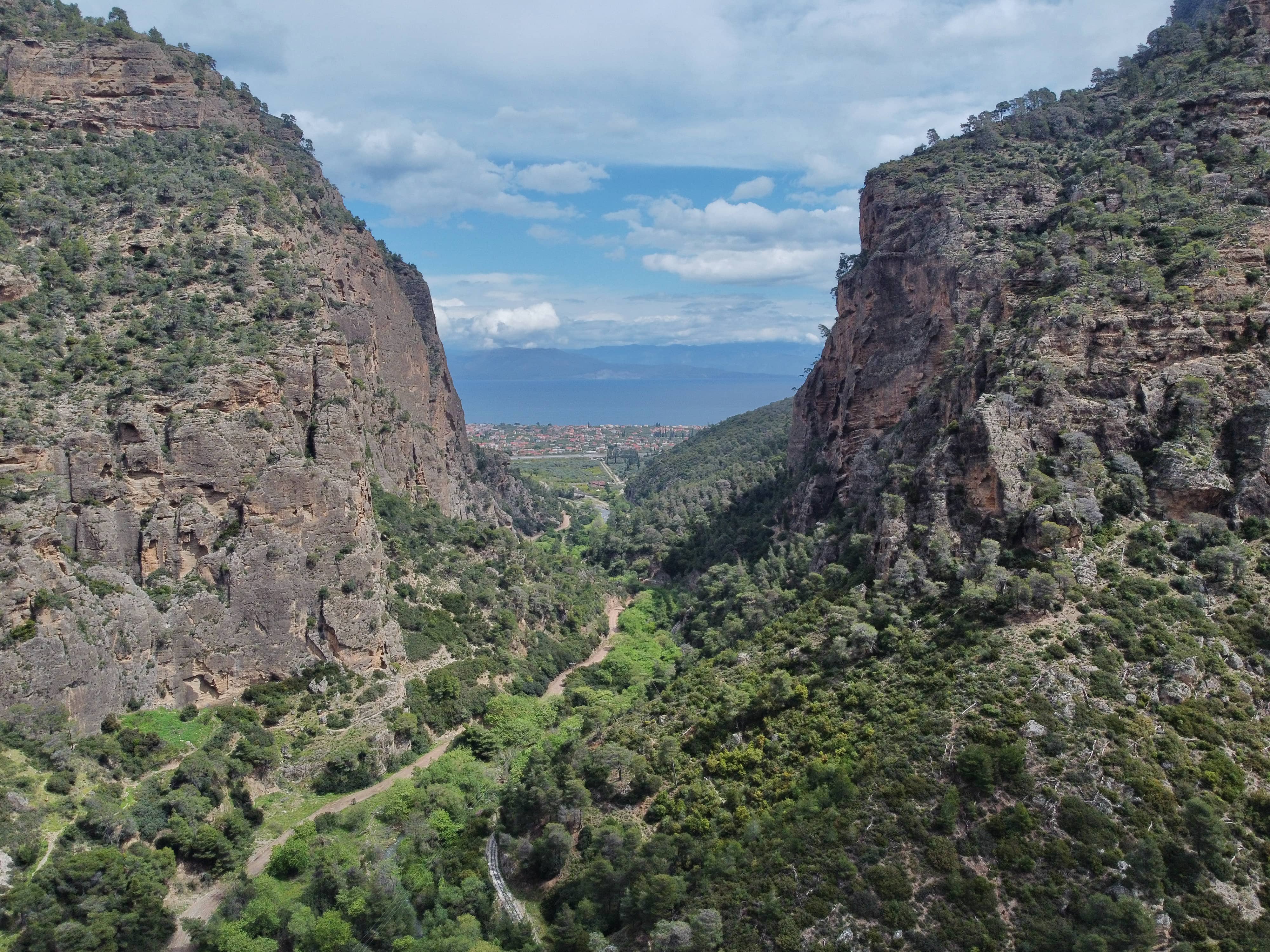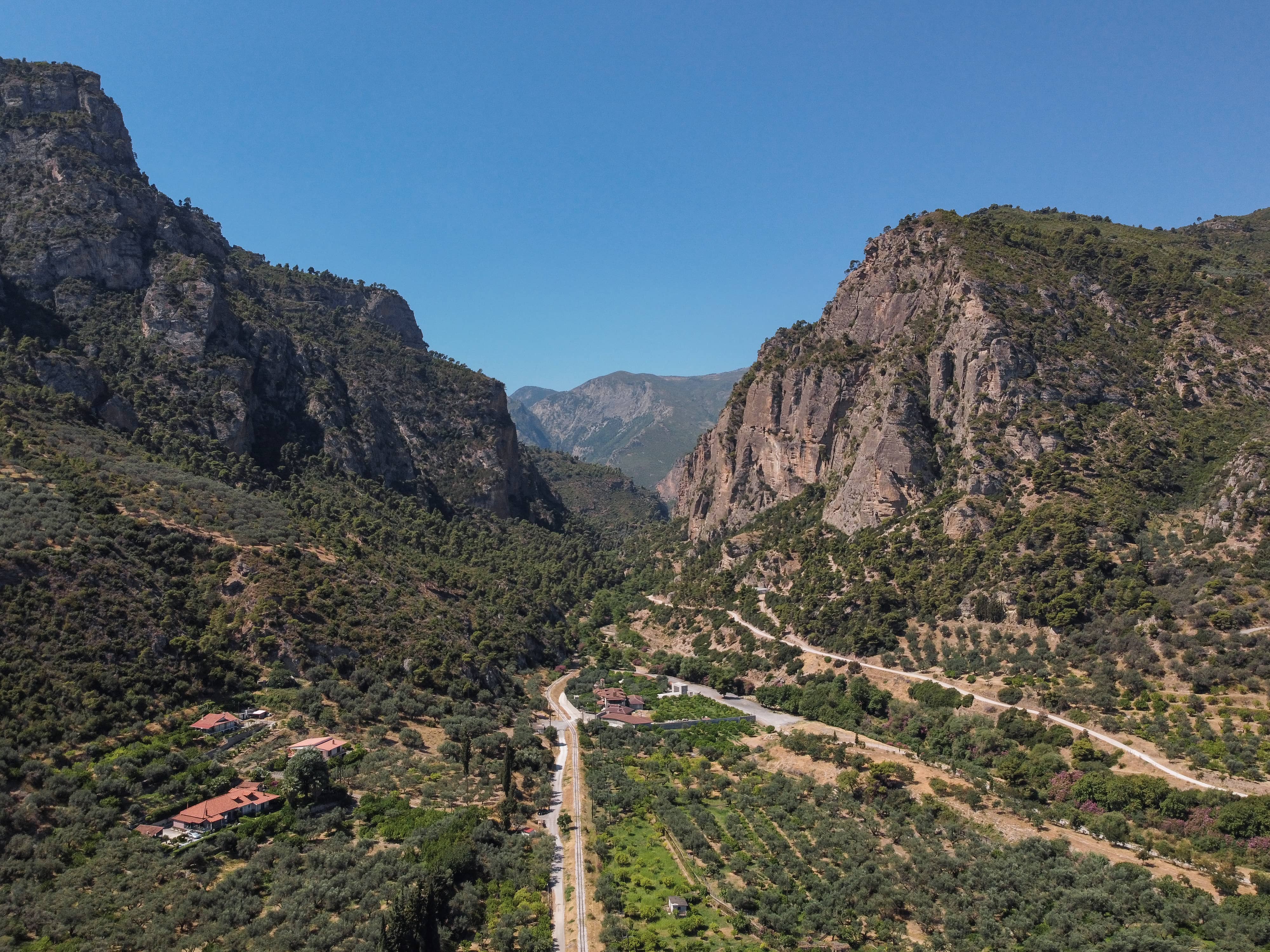PETRIFIED ANCIENT DELTAS
At the northern edge of the Vouraikos gorge, steep high slopes stand out, made of coarse- grained sediments such as conglomerates and sandstones. These sediments are the deposits of an ancient delta fan (delta deposits).
Geodiversity
The deposits of a delta fan consist of three main parts. The lower, the bottomset beds, are created when fine grained river sediment enters the sea and travels until it loses its energy and gets deposited horizontally. The foreset sediments are created on top of the bottomset ones and are coarse grained. At the edge of the delta, these sediments are deposited with an inclination of 10-30 ˚. The topset beds overlay the previous ones. They are fine grained and horizontal, forming at the lateral parts of the delta. The position of the delta changes through time. This is why when geologic time passes we find the three parts of the delta one on top of the other. We can distinguish them by the different inclination and granulometry.
Such deposits exist in the Vouraikos gorge area. They were deposited about 1 million years ago, in a 300-400 m depth sea. Their thickness is more than 800m. Today, they stand in high altitudes due to the uplift of the area initiated by faults that are connected with the extension of the Corinth rift. They form steep slopes because of the intense in depth erosion by the Vouraikos River.
Biodiversity
The Geosite is located within the Protected Area “FARANGI VOURAIKOU” (GR2320003) and the Special Protection Area (SPA) for avifauna “OROS CHELMOS (AROANIA)-FARANGI VOURAIKOU KAI PERIOCHI KALAVRYTON” (GR2320013) of the Natura 2000 network.
Very important for the wild flora of the area are the steep conglomerate cliffs of the gorge, as they host a significant number of Greek endemic taxa, such as Asperula arcadiensis, etc.
Important for the area is the butterfly Pseudophilotes bavius, a species listed in Annex II of Directive 92/43/EEC.

